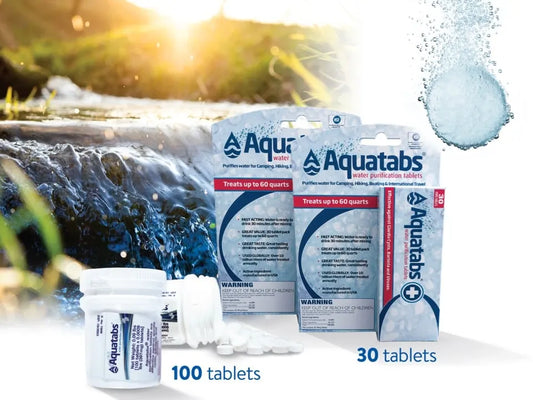DO...
DO Look for Flowing Water:
Flowing water, such as streams, rivers, and springs, is generally safer to collect than stagnant water. Moving water is less likely to harbor harmful bacteria and parasites compared to still water.
DO Choose Water Upstream:
When collecting water from a stream or river, gather it from an upstream location, away from campsites, livestock, or any signs of contamination. This reduces the risk of pollutants entering your water source.
DO Use Clear Water Whenever Possible:
Opt for the clearest water available, as it will require less filtration and treatment. While water purification tablets can handle various contaminants, starting with clearer water makes the purification process more effective.
DO Check for Animal Activity:
Be mindful of animal tracks or droppings near your water source. Water that shows signs of heavy animal activity might be more contaminated. If possible, choose a source that appears less frequented by wildlife.
DO Boil Water When In Doubt:
If you’re uncertain about the quality of the water source and have the means to do so, boil the water before using purification tablets. Boiling helps to kill most pathogens, and the tablets can then provide an extra layer of protection.
DON'T
DON’T Use Water Near Agricultural Areas:
Avoid collecting water from sources near agricultural fields or areas where pesticides and fertilizers might run off into the water. These chemicals can be harmful and are not always neutralized by purification tablets.
DON’T Collect Water From Stagnant Ponds:
Stagnant ponds, marshes, or any water with little to no movement are more likely to harbor bacteria, algae, and parasites. Unless it’s the only option, avoid using water from these sources.
DON’T Drink Water Directly from the Source:
Even if the water looks clean, never drink it directly from the source. Always treat it with water purification tablets or another method to ensure it’s safe for consumption.
DON’T Ignore Unusual Odors or Colors:
If the water has an unusual color, strong odor, or strange taste, avoid using it, even if you plan to purify it. These could be signs of chemical contamination, which tablets may not effectively neutralize.
DON’T Forget to Consider Downstream Effects:
When choosing a water source, be aware of what might be happening upstream. If there are any signs of human activity, industrial operations, or natural disturbances upstream, consider finding an alternative source to reduce the risk of contamination.
These tips can help ensure that the water you collect is as safe as possible before using your water purification tablets. Stay safe and prepared!




